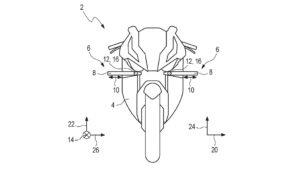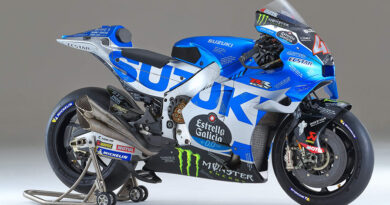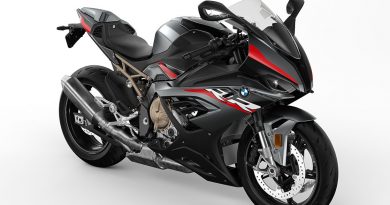BMW Motorrad Set To Introduce Active Aero Wings – S1000RR To Benefit?
A competitive frenzy has long been unfolding in the realm of superbikes. Motorcycle manufacturers are pushing the limits, each vying to unleash more power, refine electronic aids, engineer wilder aerodynamics, and innovate beyond boundaries to enhance track performance. BMW Motorrad, in its latest move, has introduced active aerodynamics to its M and S 1000 RR models.
In BMW’s patent proposal, the conventional static aerodynamic winglets, increasingly seen on superbikes, undergo a transformation into active components. While static winglets effectively stabilise motorcycles in straight-line acceleration and reduce wheelies, they falter in corners where airflow dynamics become unpredictable, posing challenges for riders and trailing competitors.
The integration of dynamic elements enables BMW engineers to mitigate airflow disruptions in corners, redirecting it strategically to amplify overall downforce through the bends without compromising track stability. The patented system ensures that regardless of the bike’s lean angle, the winglets maintain parallel alignment with the road surface, optimising downforce application—an engineering feat poised to revolutionise track performance.
It’s evident that BMW’s strategic focus with this technology lies in enhancing its competitiveness in World Superbike Championship (WSBK) events rather than catering to casual riders traversing local roads or highways. While the technology may eventually trickle down to consumer models like the S 1000 RR, akin to the incorporation of cutting-edge features from MotoGP into commercial motorcycles, it’s worth noting that active aerodynamics remain prohibited in MotoGP, reserved exclusively for professional riders.
What may transpire for average consumers is akin to a homologation special like Ducati’s Panigale V4 SP2, Honda’s Fireblade SP, or BMW’s M 1000 RR, where manufacturers crafted high-performance machines accessible to the public.
While specific details regarding BMW’s active aerodynamic system remain undisclosed in the patent, it’s inferred that the winglets are equipped with actuators, potentially integrated with lean-angle sensors prevalent in modern superbikes to complement existing traction control, stability systems, and drift modes.
Regardless of its eventual consumer application, BMW’s foray into active aerodynamics promises an exhilarating future. While not every rider may harness its full potential, enthusiasts outside the elite echelons of WSBK, Isle of Man, and MotoGP can anticipate a new era of performance innovation in the superbike landscape.
The post BMW Motorrad Set To Introduce Active Aero Wings – S1000RR To Benefit? appeared first on BikesRepublic.com.




